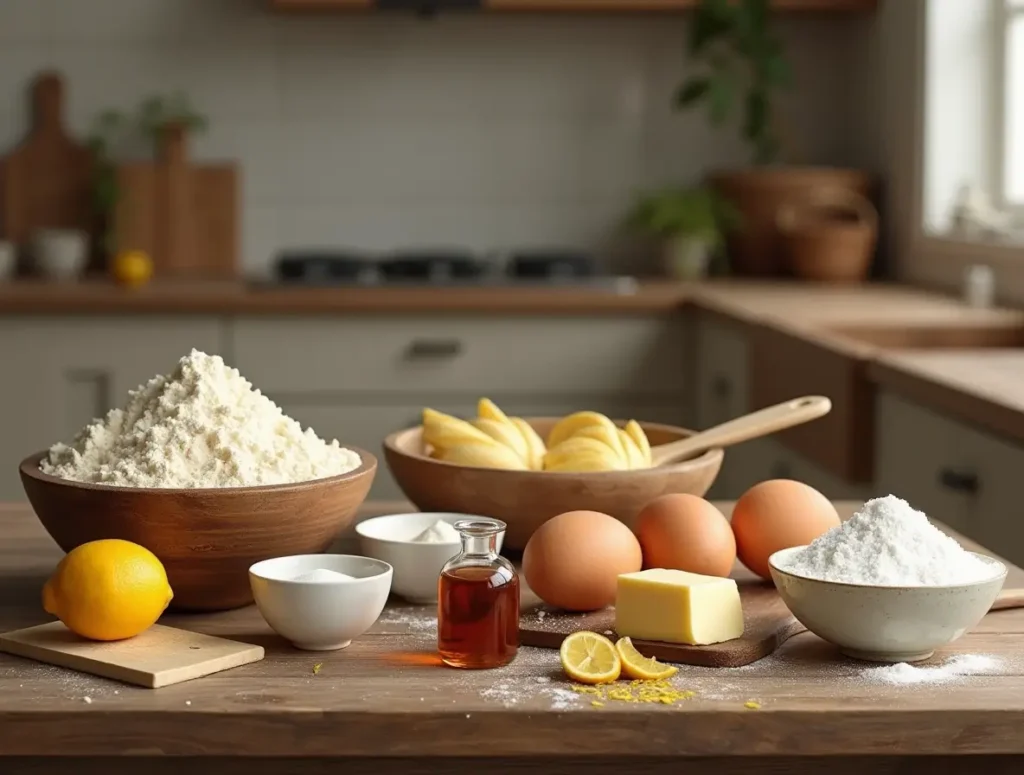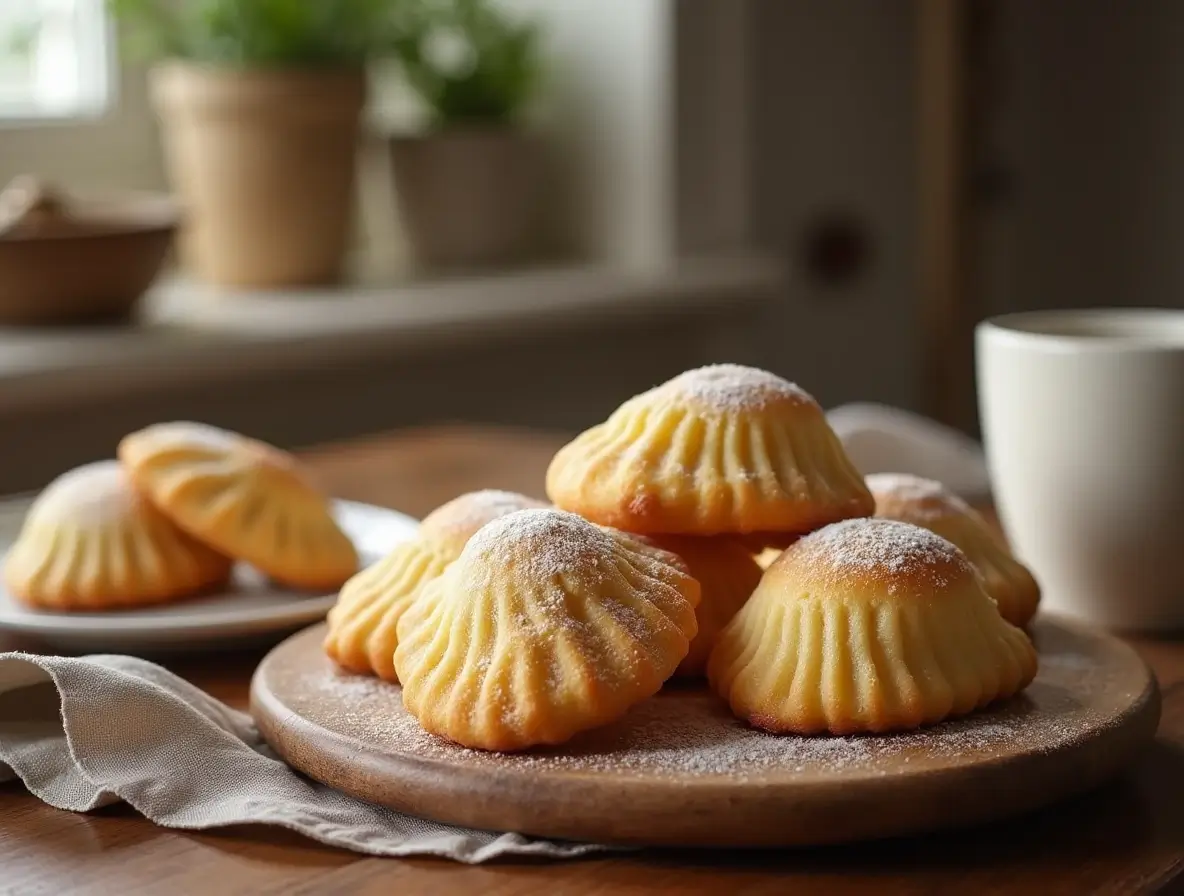Traditional French madeleine cookie recipe
Madeleines, those delicate, buttery cookies with their signature shell shape, have become iconic in both French cuisine and global pastry culture. Whether you’re a baking enthusiast or a beginner, learning how to make madeleines at home is a fun and rewarding experience. Today, we’ll dive into a classic madeleine cookie recipe, explore their history, share tips and tricks, and even suggest some creative twists to elevate your homemade treats.
Table of contents
What Are Madeleines?
Madeleines are small, shell-shaped cookies with a light, fluffy texture. Originating from France, these treats have a fascinating history and a special place in French culinary traditions. Their tender, buttery crumb and slightly crisp edges make them the perfect accompaniment to a cup of tea or coffee. But beyond their taste, madeleines also carry cultural significance, having been immortalized in literature by the famous French writer Marcel Proust.
In In Search of Lost Time, Proust wrote about his experience of dipping a madeleine into tea, evoking memories from his childhood—a moment that many readers have come to associate with the unique, nostalgic power of madeleines.
The History of Madeleines
The Origins of Madeleines
Madeleines are thought to have originated in the Lorraine region of France. The exact origin story is debated, but one popular legend suggests that they were first created by a young woman named Madeleine, who worked as a servant to Stanisław Leszczyński, the Duke of Lorraine. The duke, reportedly impressed by her cooking, adopted the madeleine recipe, which later gained popularity across France.
Another tale claims that madeleines were named after the village of Commercy in northeastern France, where they became a beloved local pastry.
Today, madeleines are enjoyed around the world, and their connection to French culture and history only adds to their charm.
Ingredients for the Perfect Madeleine Cookies
Before we jump into the recipe, let’s take a look at the ingredients you’ll need to make the best madeleines. These ingredients come together to create a soft, delicate texture with that characteristic buttery flavor.
Madeleine Cookie Recipe Ingredients
Here’s a table of the essential ingredients for the classic madeleine cookie recipe:
| Ingredient | Quantity | Purpose |
|---|---|---|
| Unsalted butter | 1/2 cup (113g) | Provides rich flavor and a tender, moist texture. |
| All-purpose flour | 1 cup (120g) | Forms the base of the dough and gives structure. |
| Granulated sugar | 1/2 cup (100g) | Adds sweetness and contributes to the cookies’ crisp texture. |
| Eggs | 2 large | Provide structure and moisture, helping the cookies rise. |
| Baking powder | 1 tsp | Helps the cookies rise and become light and fluffy. |
| Vanilla extract | 1 tsp | Adds a warm, aromatic flavor to the cookies. |
| Lemon zest (optional) | 1 tsp | Adds a refreshing citrus flavor, balancing the richness of the butter. |
| Confectioners’ sugar | 1-2 tbsp | For dusting on top for a delicate, sweet finish. |
Essential Tools for Making Madeleines
To create perfectly shaped madeleines, you’ll need a few key tools. While it’s possible to bake them in a regular muffin tin, a madeleine pan with its signature shell shape is ideal for achieving that traditional look. Here’s a list of tools to have on hand:
- Madeleine Pan: The shell-shaped pan ensures your cookies will have the signature shape.
- Mixing Bowls: A set of medium and large bowls for combining your ingredients.
- Whisk or Electric Mixer: To beat the eggs and sugar until fluffy.
- Cooling Rack: For letting your madeleines cool after baking to preserve their shape.
- Sifter or Fine Mesh Strainer: To sift dry ingredients, ensuring a lump-free batter.
Step-by-Step Madeleine Cookie Recipe
Now that you have your ingredients and tools ready, let’s get into the process of making these delicious, buttery cookies. This step-by-step guide will walk you through every part of the process to ensure your madeleines turn out perfectly.
Step 1: Prepare the Madeleine Pan
First, make sure to grease and flour your madeleine pan. This step is crucial to ensure that your madeleines come out easily after baking. If you prefer, you can also use non-stick cooking spray to coat the pan. You can even use a pastry brush to distribute the fat evenly across the molds.
Step 2: Make the Madeleine Batter
In a mixing bowl, whisk together the eggs and granulated sugar. Use an electric mixer on medium-high speed to beat the eggs and sugar until the mixture becomes light and fluffy. This process is important as it helps to create the airy texture of the madeleines.
Once the egg-sugar mixture is ready, sift the flour and baking powder into the bowl and gently fold it in. Be careful not to overmix, as this can deflate the batter.
Next, melt the unsalted butter and allow it to cool slightly. Then, fold the melted butter into the batter, followed by the vanilla extract and lemon zest (if you’re using it).
Step 3: Chill the Batter
It’s essential to let the batter rest in the fridge for at least 30 minutes to help the cookies hold their shape during baking. This also contributes to the characteristic texture of madeleines, which are soft and airy on the inside but slightly crisp on the edges.
Step 4: Fill the Pan and Bake
Preheat your oven to 375°F (190°C). While the oven is heating, use a spoon or piping bag to fill each madeleine mold about two-thirds full with batter. Be sure not to overfill the molds, as the batter will expand during baking.
Place the pan in the oven and bake for about 10-12 minutes, or until the madeleines are golden brown around the edges and a toothpick inserted into the center comes out clean. You should also see a slight “bump” on top of each madeleine—a telltale sign of perfectly baked cookies.
Step 5: Cooling and Serving
Once baked, let the madeleines cool in the pan for a few minutes, then transfer them to a cooling rack. If you like, dust them with a light coating of powdered sugar before serving.
Tips for Perfect Madeleines
Here are some expert tips to ensure your madeleines come out perfectly every time:
1. Use Room Temperature Ingredients
For the best results, make sure your eggs and butter are at room temperature before starting. This helps them blend together more easily and results in a smoother batter.
2. Don’t Overmix the Batter
When folding in the flour and baking powder, mix just until combined. Overmixing can cause the madeleines to lose their delicate texture.
3. Rest the Batter
Letting the batter chill in the fridge for 30 minutes is crucial for the best texture. It helps the dough firm up, allowing the cookies to rise more evenly during baking.
4. Don’t Open the Oven Door
Madeleines are sensitive to temperature changes. Opening the oven door can cause them to collapse. Keep an eye on the baking time and only open the door when necessary.
Pairing Madeleines with Drinks
Madeleines are often enjoyed with a hot beverage, making them perfect for an afternoon snack or dessert. Here are a few drinks that pair wonderfully with these delicate cookies:
- Tea: Earl Grey, Chamomile, or Green Tea are classic choices.
- Coffee: A light roast or espresso complements the buttery richness of the madeleines.
- Hot Chocolate: For a cozy treat, pair madeleines with a warm cup of hot chocolate.

Madeleine Variations and Creative Twists
While the classic madeleine recipe is already a hit, there are plenty of ways to put your own spin on these cookies. Here are a few variations to try:
1. Lemon-Glazed Madeleines
For an extra burst of citrus, drizzle a simple lemon glaze over your madeleines. Mix powdered sugar with lemon juice to create a smooth, sweet topping.
2. Chocolate-Dipped Madeleines
Melt some dark chocolate and dip the bottoms of the madeleines in it. Let the chocolate harden for a decadent finish.
3. Mini Madeleines
Make bite-sized versions by filling mini madeleine pans with the batter. These are perfect for parties or as a cute snack.
FAQs
1. How do I get the perfect Madeleine bump?
To achieve the signature “bump” on your madeleines, make sure your batter is chilled for at least 30 minutes before baking. Also, bake at a high temperature (375°F or 190°C) for 10-12 minutes to allow the cookies to rise quickly and form that iconic bump.
2. Can I make madeleines without a special pan?
While a traditional madeleine pan helps create the signature shell shape, you can still make these cookies using a muffin tin. They may not have the exact shape but will still be delicious!
3. Can I add flavor variations to my Madeleine cookie recipe?
Absolutely! You can add different flavors to your madeleine dough, like lemon zest, orange zest, almond extract, or even chocolate chips for a twist. Get creative with your ingredients to match your tastes!
4. How do I store leftover madeleines?
Store leftover madeleines in an airtight container at room temperature for up to 3 days. For longer storage, you can freeze them for up to 3 months. Just be sure to let them cool completely before storing or freezing.
5. Can I make the madeleine dough ahead of time?
Yes, you can prepare the madeleine dough ahead of time! Store the batter in the refrigerator for up to 24 hours before baking. Chilling the dough will help achieve a lighter texture and better flavor.
Conclusion
Madeleines are the epitome of French elegance in cookie form. Their delicate texture, buttery flavor, and charming shell shape make them a delightful treat to enjoy with family and friends. With the step-by-step guide provided here, you’ll be able to master the art of making these cookies in no time. Whether you prefer the classic recipe or want to experiment with flavors like lemon or chocolate, madeleines are sure to become a favorite in your baking repertoire.
If you enjoyed this recipe, be sure to check out more of our baking guides. Don’t forget to share your madeleine creations with us on social media—use the hashtag #MadeleineMoments so we can see your delicious results! Happy baking!

